Now some of you skeptics might be looking at this mind-bender and thinking: “The answer is 19. It makes no difference that two of the previous equations are wrong.” And as far as we’re concerned, you’re correct in thinking that! If you declare 19 to be your answer, we’ll take it. That’s thinking outside of the box!
But for those who who really want to test their metal, this mind-bender has a few more tricks up its sleeve, as you’ll see.
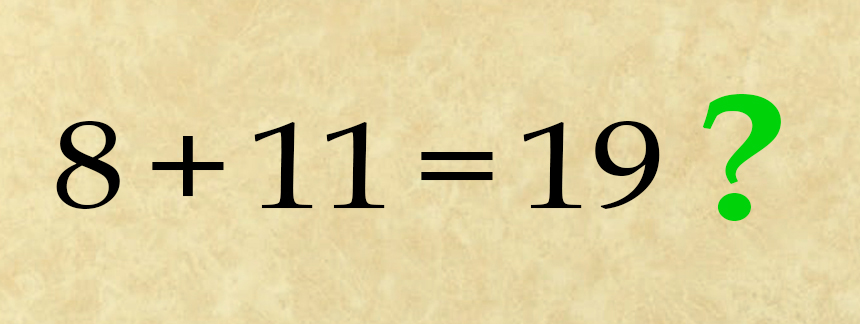
There are a couple of hidden patterns in the sequence of equations that ties it all together and gives you the real answer. But you’ll have to figure out that pattern and solve it mathematically. Are you up for it?
Let’s take another look:
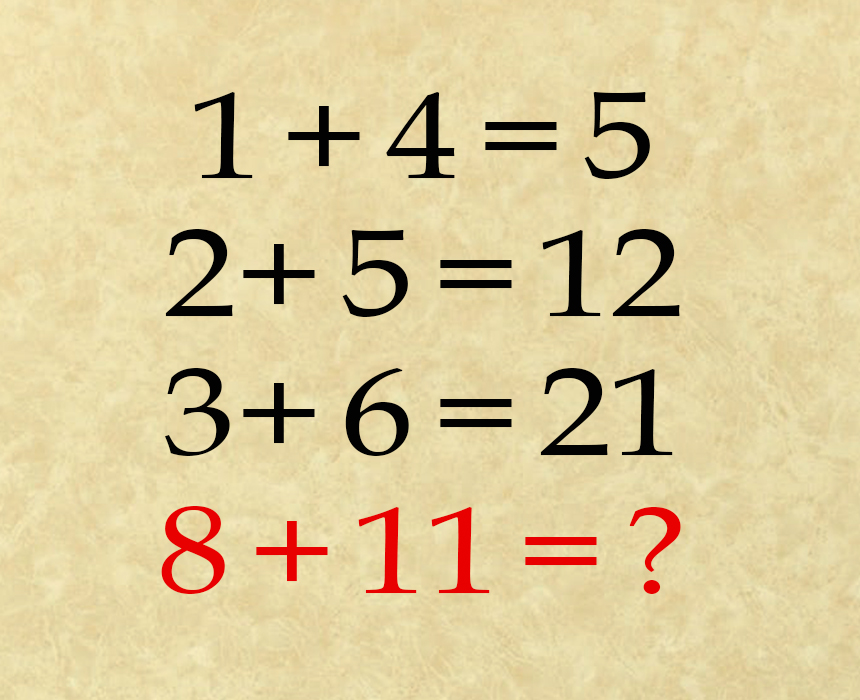
Take a moment to consider what patterns are at work. Hint: there are two possible solutions (besides the aforementioned trick answer of 19). Try to come up with both solutions before you scroll down to see the answers below.

Solution 1 Answer:
The first equation makes plain sense: 1 + 4 = 5 , naturally. But that’s where the logic seems to end. The second and third equations, 2 + 5 = 12 and 3 + 6 = 21, do not equate unless there is a larger pattern or hidden rule that we aren’t given in the sequence. If we can determine what that is, we may be able to solve the last equation.
The Pattern:
Add the left side of any given equation to the answer of the previous equation (as per the illustration below). In the case of the first equation, there is no previous equation, and so you would add zero to the left side of the equation (0 + 1 + 4), which gives you 5. The same pattern works for the second and third equations, and so we know it’s correct. Apply this rule to the last equation, and we get the solution.
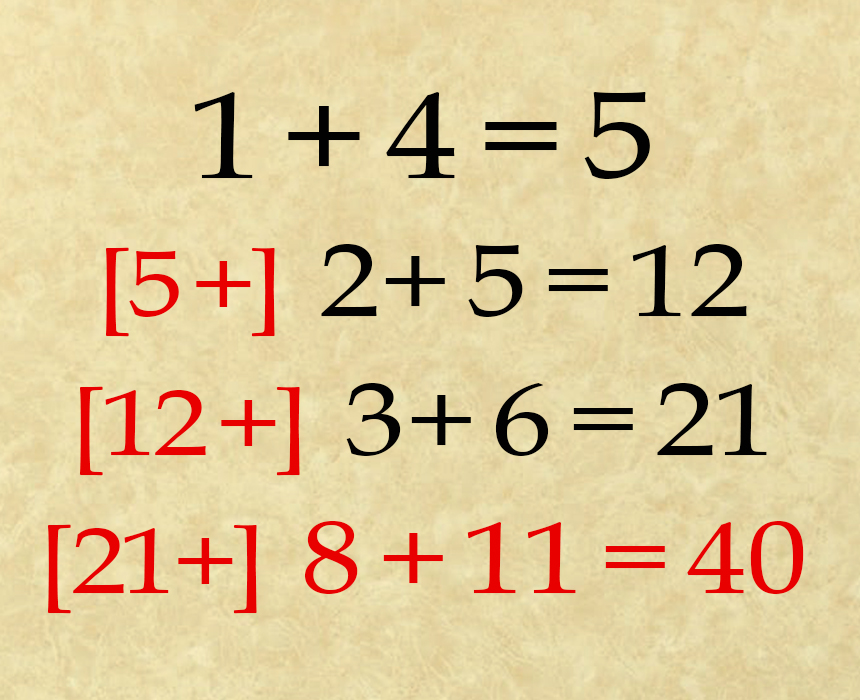
The answer for Solution 1 is 40.
Following this pattern, we can solve the final equation by adding the previous answer (21) to the left side of the said equation (8 + 11) which gives us 40.
Solution 2 Answer:
You might have thought that that is all there is to it, but in fact, as some of you may have noticed, there is a another pattern hidden in the sequence, and it gives a second solution that also works. It uses the first pattern but results in a different, yet perfectly valid, answer.
The Second Pattern:
Observe how the first number from each of the first three equations create a consecutive sequence: 1, 2, 3; and how the second number from each of the first three equations create another consecutive sequence: 4, 5, 6.
The last equation may seem to break this consecutive pattern, but in fact, it fits into the sequence if you grant that parts of that sequence exist but are omitted from view, as per the illustration below:
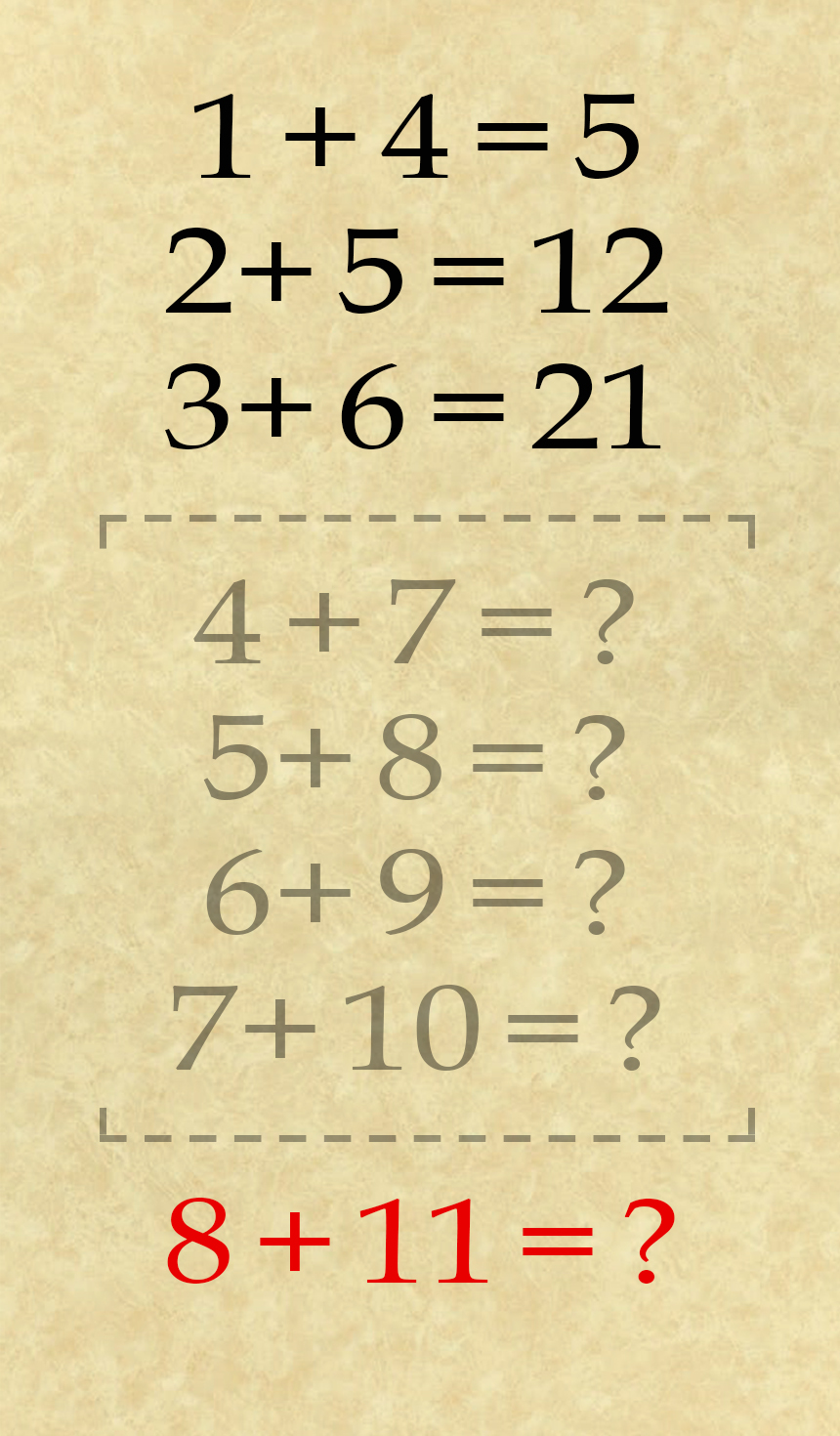
And since the entire sequence has now changed—including the second-last equation in particular—and supposing we use the same rule as Solution 1 to solve the last equation, we will get a different answer, as you can see from the illustration below:
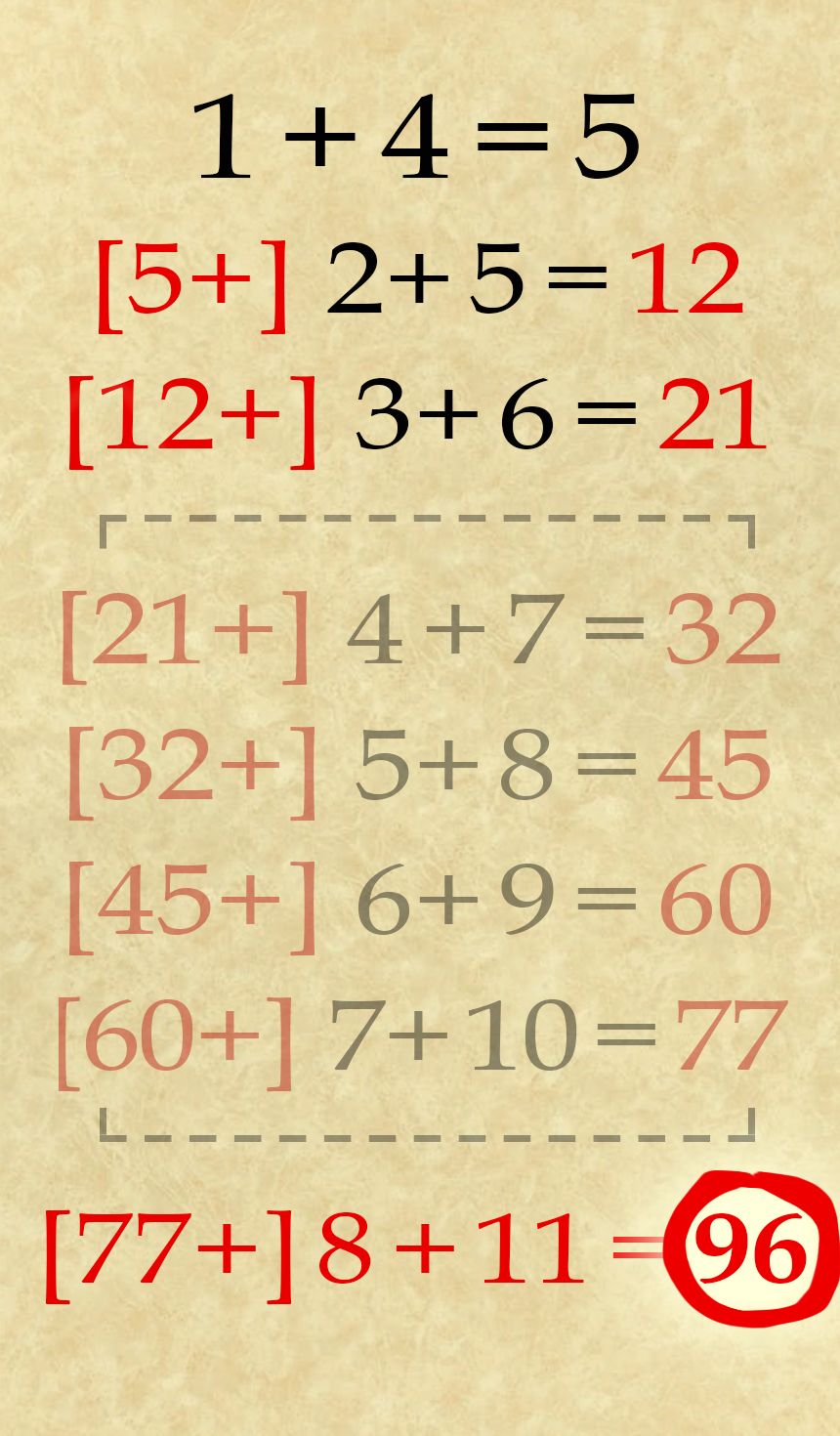
And the answer for Solution 2 is 96!
Photo Credit: Illustration – The Epoch Times







